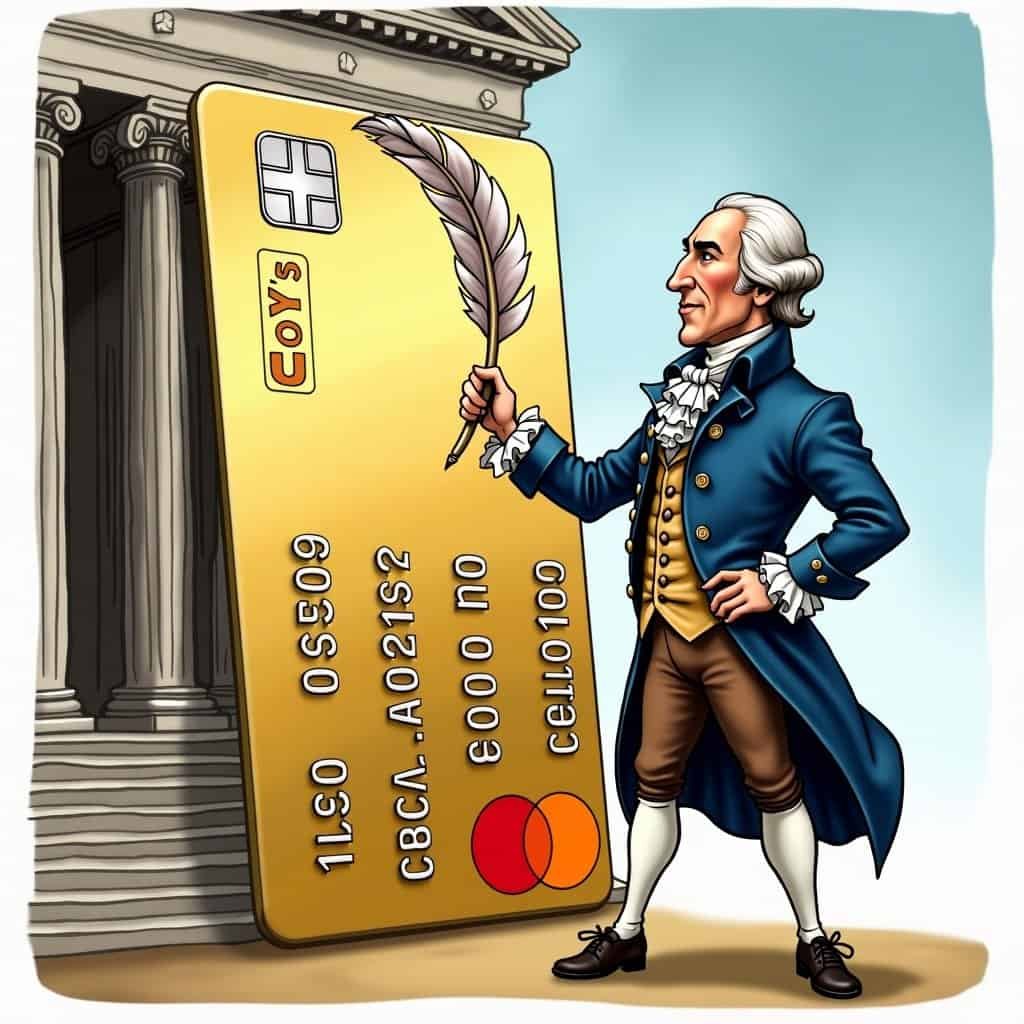Alexander Hamilton was the economic maestro of the Founding Fathers, orchestrating a financial system that still resonates today. While Jefferson and his agrarian pals were swooning over wheat fields, Hamilton was busy laying the foundation for a nation on the rise with his big-city smarts.
Hamilton’s economic policies might make modern progressives break out in hives. He was all about industrialization, private enterprise, and a federal government that could actually flex its economic muscles. Oh, the horror—for those who think throwing money at problems is the answer to everything!
Remember Hamilton’s crowning achievement? The first Bank of the United States. This wasn’t just a piggy bank for frivolous spending. No, sir! It provided a stable currency for investing, job creation, and ensuring America could strut its stuff on the global stage. Conservatives today call this smart planning, while liberals… well, they probably have a different word for it.
Hamilton’s Tariff Strategy
Now, let’s talk tariffs. Before you roll your eyes, hear me out. Hamilton used import taxes to give American manufacturing a boost. Think “America First” but with powdered wigs and quill pens. Instead of relying on Europe’s hand-me-downs, Hamilton wanted us to roll up our sleeves and make our own stuff. His logic was as clear as a bell: America thrives when its factories are humming, people are working, and wealth is growing—not through handouts, but through good old-fashioned expansion.
Hamilton’s Economic Principles
- ✓ Promote industrialization
- ✓ Support private enterprise
- ✓ Establish a strong federal government
- ✓ Create a national bank
- ✓ Implement protective tariffs
Not everyone was a fan of Hamilton’s pro-American economic policies. Thomas Jefferson, bless his heart, wasn’t thrilled about trading rural simplicity for urban innovation. He dreamed of an agrarian utopia where everyone plowed fields and discussed philosophy between chores. Hamilton, on the other hand, knew that the future was in commerce, manufacturing, and entrepreneurship. Instead of daydreaming about utopias, he created opportunities. Looks like Hamilton won that argument, because nobody’s shedding tears over a shortage of ox-drawn plows in modern America.
Debt Management: Hamilton Style
Let’s chat about debt. Hamilton knew you couldn’t run a country like a lemonade stand, though some modern progressives seem to think you can—with someone else footing the bill, of course. He whipped the national debt into shape, turning it into a tool for prosperity rather than a crushing burden. Welcome to Fiscal Responsibility 101, folks!
Fast forward to today, and Hamilton’s values align nicely with conservative economic ideals. He envisioned a nation where hard work, smart play, and calculated risks led to success for both individuals and institutions. This doesn’t quite jive with progressive ideologies that often promise prosperity by redistributing other people’s hard-earned cash. As Hamilton showed, it’s not about cutting the economic pie into smaller pieces; it’s about making the whole pie bigger so everyone gets a heftier slice.
Hamilton’s Emphasis on Innovation
Hamilton’s focus on innovation would make any conservative proud. True conservatives aren’t stuck in the past—they’re all about fostering ingenuity, celebrating enterprise, and ensuring American capitalism thrives. Hamilton laid the groundwork for the idea that progress happens when individuals are empowered—not when government agencies balloon like overfed whales on taxpayer dollars.
Hamilton vs. Modern Progressives
| Hamilton’s Approach | Progressive Approach |
|---|---|
| Build wealth | Redistribute wealth |
| Empower individuals | Expand government control |
| Encourage innovation | Regulate industries |
| Promote self-reliance | Increase dependency |
Ironically, Hamilton’s biggest critics back then seem to have ideological cousins today. Some progressives argue against robust capitalism, pushing for a “fairer” system with more state control and wealth redistribution. But anyone who’s familiar with Hamilton’s ideas knows his approach was about creating wealth, not shuffling it around. This isn’t just about preserving yesterday’s policies; it’s about investing in tomorrow’s success. Prosperity always trumps dependency—a message Hamilton would surely endorse.
To wrap it up, Hamilton’s vision for pro-American economic policies wasn’t just about numbers and banks; it was about pride, independence, and innovation. He wanted to create a nation that could stand tall economically and lead by example. That’s something any Republican—or anyone with a lick of sense—can get behind. So, while Hamilton may be famous for his face on the $10 bill and his time on Broadway, let’s not forget he’s the unsung hero of American economic strength. Debt under control, businesses booming, and tariffs raising the roof—Hamilton’s America wasn’t perfect, but boy, was it an engine of growth. Take that, Jefferson!






